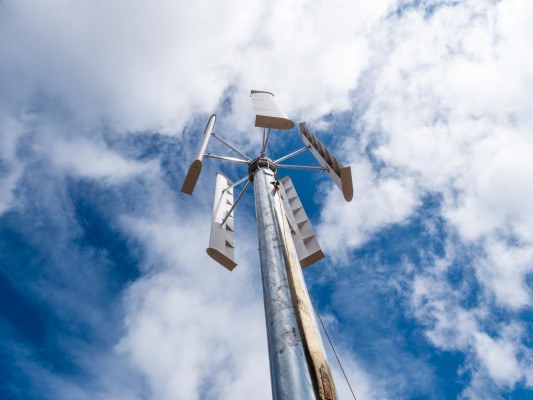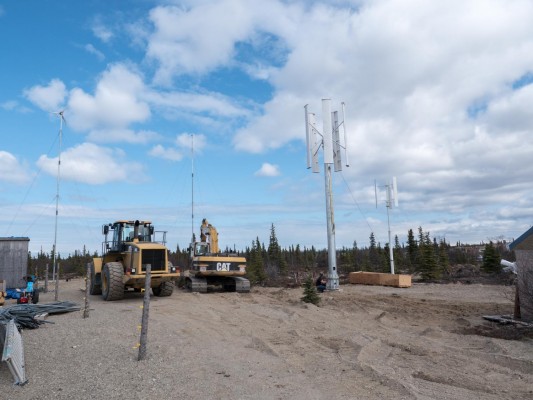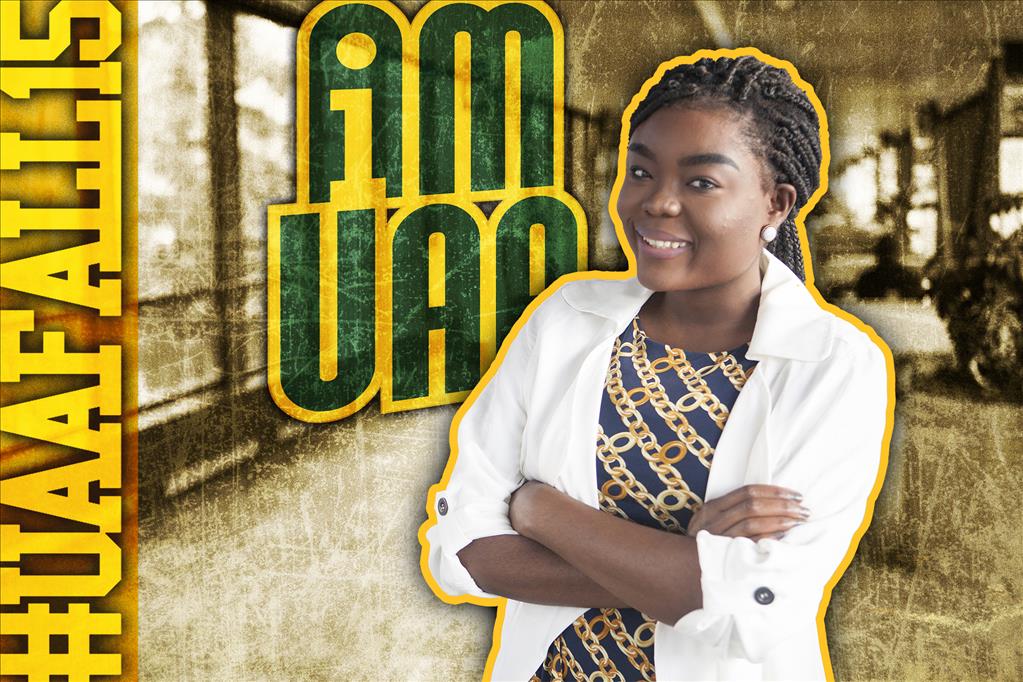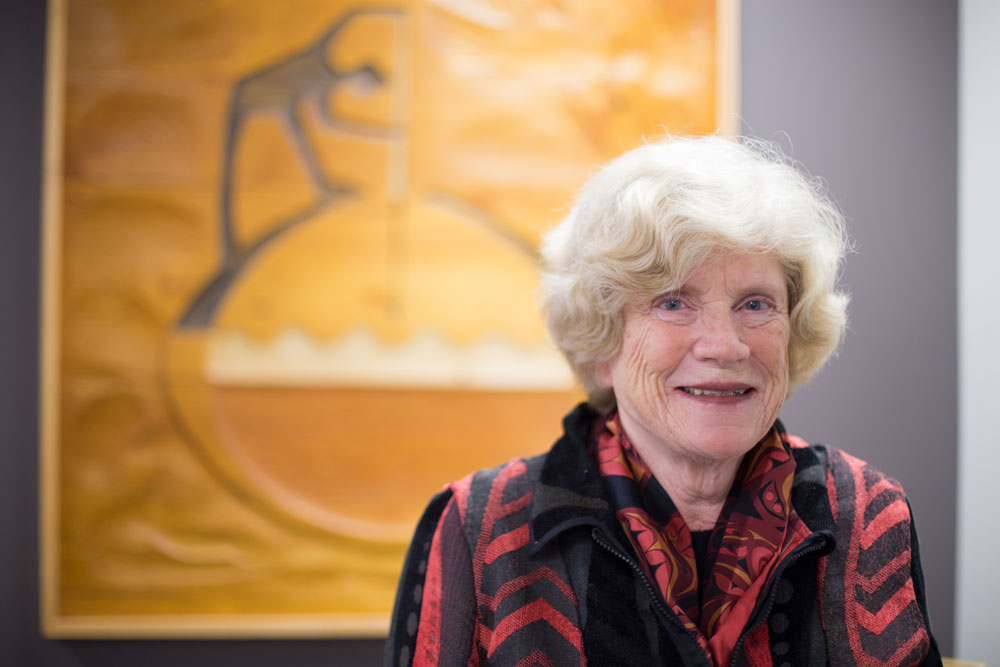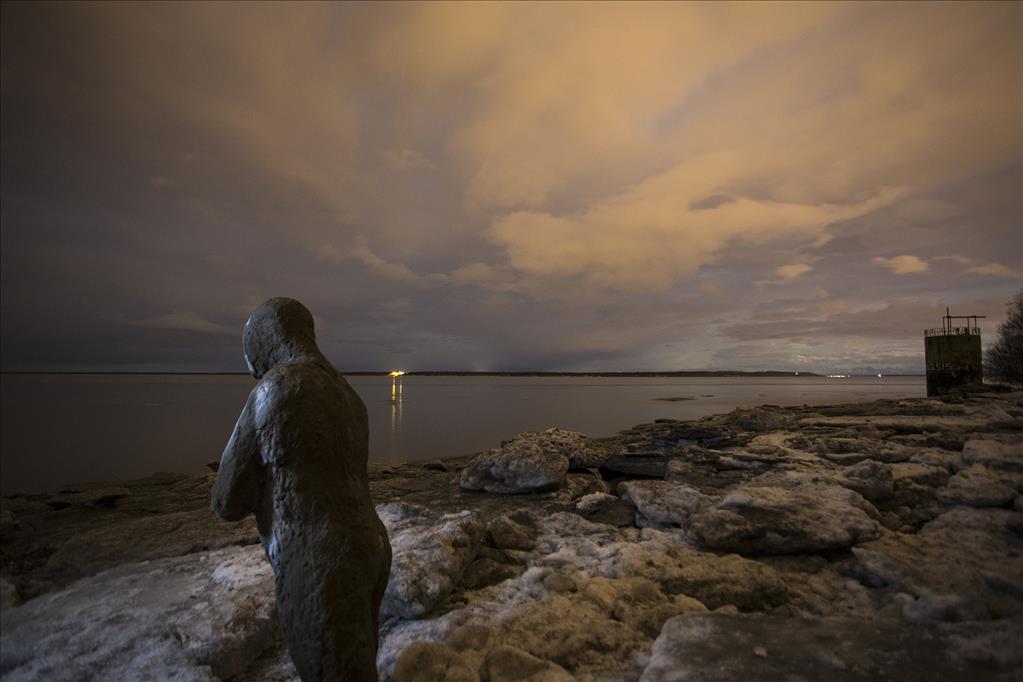Harnessing the wind in Igiugig for village-sized energy alternatives
by Kathleen McCoy |
UAA team's wind turbine project cited in post-Obama visit White House fact sheet on new investments
The crushingly high cost of energy in rural Alaska is no secret. Solutions can be innovative and intriguing, but they also must be simple and cheap.
In one ongoing episode in the tiny village of Igiugig near Bristol Bay, local residents have joined researchers from UAA, Caltech and now Stanford to whip up a lower-tech, highly reliable solution in the form of vertical axis wind turbines.
We're not talking those giant lollipops whirling on Fire Island in Cook Inlet. These are smaller, lighter and-no matter which way the wind blows-effective. And most intriguing, they can be clustered to take advantage of mutual position and proximity in the same way fish take advantage of swimming in schools.
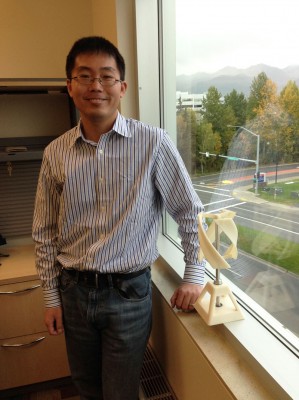
Jifeng Peng, an engineering professor at UAA, is working with a colleague at Stanford and residents of Igiugig to use vertical axis wind turbines to generate cheaper energy for the rural community. The model on his window sill illustrates one example of a vertical axis wind turbine. (Photo by Kathleen McCoy/UAA)
OK, I admit that was a big leap from wind turbines to schools of fish. My guide here is Jifeng Peng, a mechanical engineering professor at UAA who got his bachelor's in China, his master's at Stonybrook and his doctorate at Caltech. He's been in Alaska for six years.
Back at Caltech, he specialized in bioengineering and worked with John Dabiri, a MacArthur Fellow honored for his bio-inspired wind energy research (hold that image of a school of fish).
Peng and Dabiri's research connection, plus the need for smaller scale wind-generating opportunities (and rural Alaska's crying need for energy cost relief) gave rise to a $2 million research grant from the Moore Foundation.
The Gordon and Betty Moore Foundation already is active in Alaska, funding work to support sustainable ecosystems for wild salmon. This wind turbine project is their first venture toward solving one of the biggest problems of village life. Energy in Igiugig costs 52 cents per kilowatt hour. In some villages, it's 80 cents-$1, compared to 10-20 cents in Anchorage.
Dabiri and Peng already received one-third of the grant and used it to research geographic locations and different models of vertical axis turbines. After they tested three types, they settled on one version and on Igiugig as the perfect test location.
Why Igiugig? The village has been forward-thinking for a long time, with a steady stream of life-improving initiatives frequently updated in their monthly village newsletter, the Igiugig News and Notes. Recent issues highlight water storage improvements, tapping wasted heat for village offices, hydrokinetic and wind energy experiments, a grant to support food security by growing traditional wild foods year-round in their greenhouse and another to revitalize language.
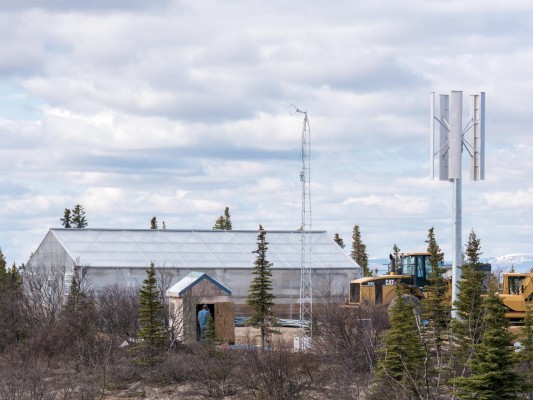
Vertical axis wind turbine next to Igiugig's community greenhouse. (Photo by Ryan Peterson via Jifeng Peng/UAA)
Perhaps most importantly for this project, Igiugig has a local construction company with the tools needed to pour the cement foundations for the wind turbines, a cost and logistics benefit. In addition, with all its many energy projects, the community is geared up and ready to maintain what will likely be a collection of several dozen wind turbines generating a good portion of village energy needs.
But we can't leave this story without understanding how an array of wind turbines mimics a school of fish. Back to our guide, Jifeng Peng, on precisely that topic.
"So, basically, each turbine as it rotates generates a circular or rotational flow, called a vortex. This is similar to the flow generated by a fish's tail as it swims along," Peng said.
"When schools of fish swim in sync, a fish is able to use the surrounding vortices generated by other fish to improve its individual propulsive efficiency."
The same thing happens in a field of vertical axis wind turbines. Their aerodynamic interactions increase the efficiency of each turbine.
Vortices may be hard to wrap your head around because, whether formed in air or water, they are mostly invisible to us. But a quick visit to YouTube offers up this 12-second video illustrating how airplane wings generate vortices. Both Dabiri and Peng were quoted last June in this WIRED magazine article on the vortices created when fish swim. Check out the animated model of a moving "fish," powering off vortices created by its tail; the imagery is mesmerizing.
So what's up next for this research project? Peng and team are still coming down from the clouds after seeing their project noted in a White House press release after President Obama's visit.
But back on earth, stakeholders meet in Igiugig this week to assess performance data gathered so far. Another 8-12 turbines will be installed next spring. If energy effectiveness continues, more will be added.
Ultimately, Igiugig could be getting in on the ground floor of a village-sized solution to high rural energy costs.
A version of this story by Kathleen McCoy appeared in the Alaska Dispatch News on Sunday Sept. 20, 2015.
 "Harnessing the wind in Igiugig for village-sized energy alternatives" is licensed under a Creative Commons Attribution-NonCommercial 4.0 International License.
"Harnessing the wind in Igiugig for village-sized energy alternatives" is licensed under a Creative Commons Attribution-NonCommercial 4.0 International License.










